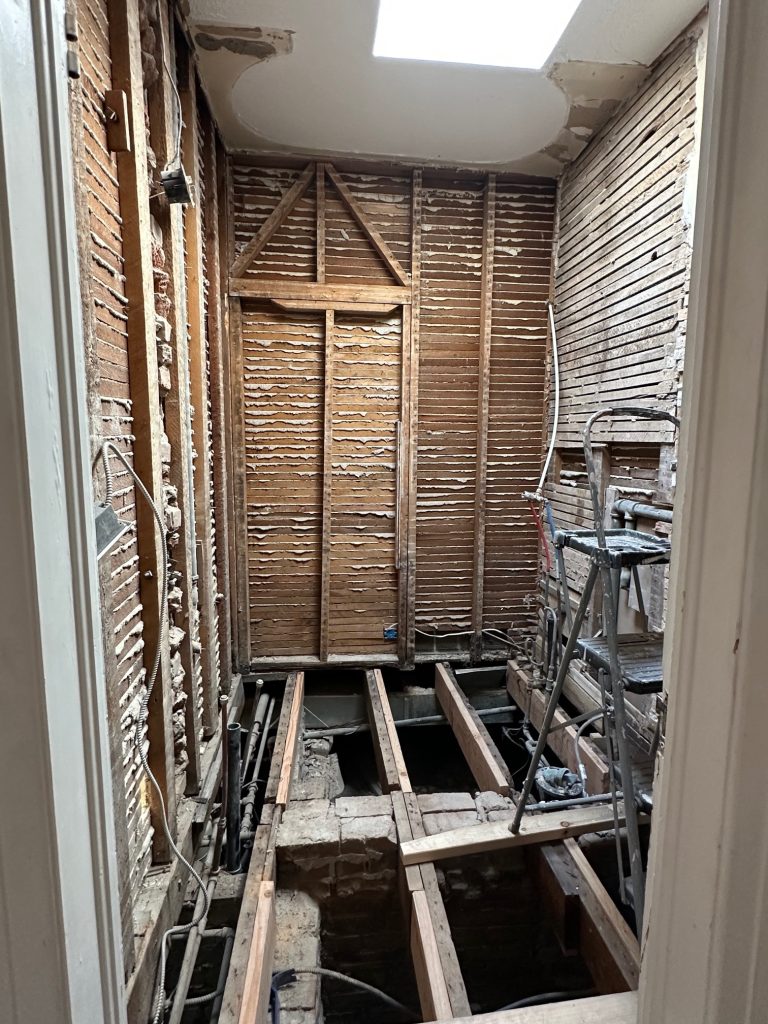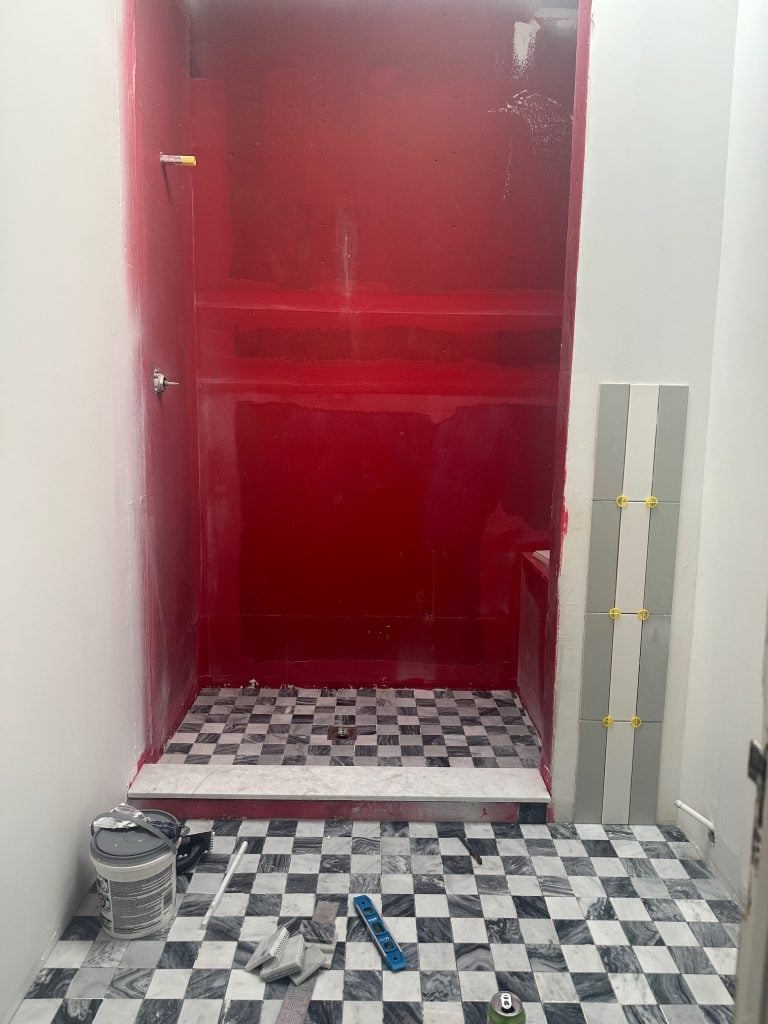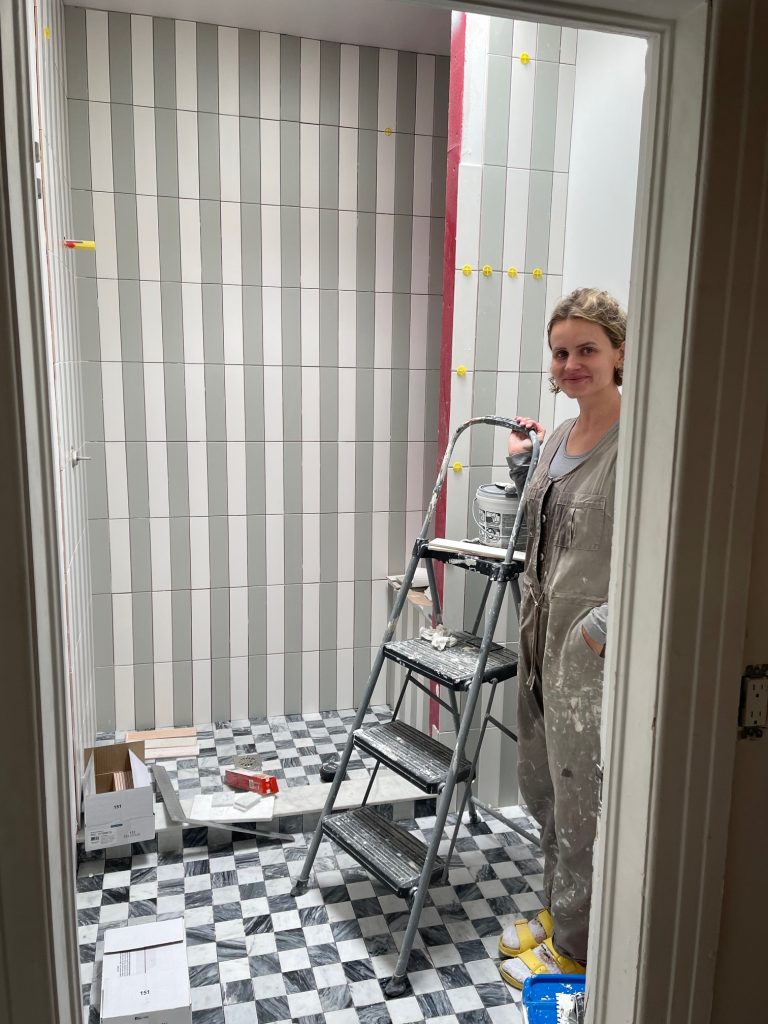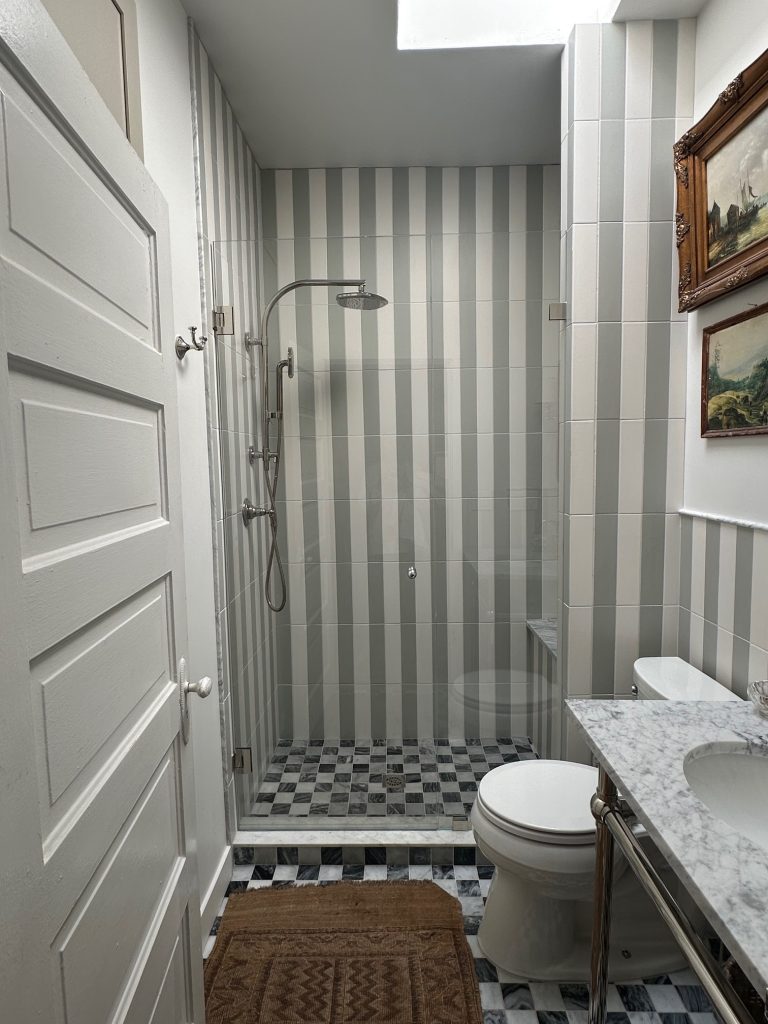One of the things I love about working in trust and safety, especially in the start-up space, is that it attracts people who aren’t afraid of a DIY project. I count myself among them. Over the past year, I’ve amassed a small arsenal of power tools, born out of necessity when I discovered a broken water pipe in the bathroom of my historic townhome.
To set the scene: my home has no straight walls, no right angles, and floors that lean just slightly south. We call this “charming”. A few weeks prior to this plumbing disaster, I had been laid off, leaving me with plenty of time, and just enough courage, to take on the repairs myself.
I was quickly faced with choices:
Option 1: Patch the Leak
Repair the single 100 year old lead pipe, keep the structure as intact as possible, and save the dream bathroom renovation for later. This would stop the water pouring through the floor but leave me vulnerable to future emergencies. What else was behind the walls?
Option 2: Full Renovation
Recognize that the lead pipes behind the walls were a ticking time bomb. By renovating the entire bathroom now, I could replace everything foundational and avoid repeat disasters. It would be expensive and time-consuming, but it meant achieving the outcome I had originally planned for years down the line.
I chose Option 2, addressing the immediate problem but doing it the right way.
From there, I faced another decision:
- Hire a contractor for everything. Fast turnaround, but I’d have to compromise on details due to limited availability of parts. Approximately 2 weeks for the project to be complete but I would have to accept that I wouldn’t get to make all of my own design choices due to limited ready-made items being available.
- Hybrid approach. Handle the design, sourcing, and finishing myself while hiring professionals for the plumbing and structural work. More time-intensive, but I’d retain control, and would save on some of the expenses.
- DIY everything. Learn plumbing and electrical from scratch and accept a 3–4 month timeline—abandoning the job hunt to become a full-time renovator.
If you know me, you guessed correctly, I went with option 2. Six weeks and about 100 hours of manual work later, my bathroom was complete. I cut and laid over 500 tiles by hand, learned new skills, and collaborated with trusted professionals for the tasks I couldn’t safely tackle myself.
This experience got me thinking: the “build vs buy” dilemma isn’t just about home renovations. It’s at the heart of trust and safety, and SaaS more broadly.
Build vs Buy in Trust & Safety
“Build vs buy” is one of the most persistent questions in software, and it resurfaces again and again as new challenges arise. While it’s often framed as a start-up concern, I hear it even more from large organizations. They already have tools in place and institutional knowledge to draw from. The decision becomes:
Should we build everything in-house, keeping full control?
Should we rely entirely on third-party solutions, knowing we might sacrifice some flexibility?
Or is there a middle ground?
The Case for Building
Building internally gives you complete ownership. Your data, models, and processes remain fully yours. You can move at your own pace, tailor everything to your community, and build a stack that reflects years of engineering investment.
But what works brilliantly at first often starts to feel “heavy” over time. Internal systems become clunky, dated, and harder to maintain. Soon you’re patching one leak after another, just like my old lead pipes.
The Case for Buying
Third-party tools often bring speed, efficiency, and cutting-edge advancements you’d struggle to replicate in-house. With the rapid rise of AI over the past two years, the “buy” option has become increasingly compelling. But it comes with trade-offs: you may feel less in control and more dependent on outside expertise.
The Middle Ground
Much like my renovation approach, the sweet spot for many organizations is a hybrid strategy – leveraging internal strengths while outsourcing where it makes sense. The decision often comes down to a few core questions:
Where could external expertise accelerate progress without undermining your strategy?
What’s the true cost of maintaining your current tools, not just today, but forever?
Which functions are foundational to your identity and must stay internal?
What It Takes to Build in T&S
Trust and safety isn’t static, it’s a constantly evolving effort shaped by regulation, community expectations, organizational priorities, and technological advances. Which makes build vs buy a complex decision. If you choose to build internally, here’s what you’ll likely need:
- Models & Detection
- Data Science team to build and maintain evolving models
- Policy team to define standards and provide training data
- Labelers, often multilingual, to apply those standards at scale
- AI researchers to test new methods and keep you on the cutting edge
- Data & Infrastructure
- Engineers to secure data, connect systems, and maintain performance
- Engineers to secure data, connect systems, and maintain performance
- Product & Design
- Product managers to turn data into actionable insights
- Designers to create intuitive workflows for moderators
- Moderators & Moderator Support
- Wellness experts to protect staff handling sensitive content
- The moderators themselves on the ground, reviewing your content to maintain your community standards
- Regulatory & Compliance
- Legal teams for data standards and audits
- Processes for transparency reporting, user appeals, and audit logs
- Leadership & Coordination
- A trust and safety lead, the “general contractor”, who advocates to the larger organization of the need for these endeavors and to orchestrate efforts across disciplines
Final Thoughts
Just like my renovation, the decision to build, buy, or blend comes down to resources, priorities, and long-term vision. You may already have strong internal capabilities you want to preserve, while also recognizing where external partners can help.
With AI reshaping the landscape at record speed, I’d argue that the “buy” side deserves fresh consideration. Ultimately, the goal is the same: a sustainable trust and safety strategy that balances control, efficiency, and adaptability, without letting any of the balls drop.
And just in case you’re curious about my newly honed skills, here are a few before and after images of my own “build vs buy” project.




